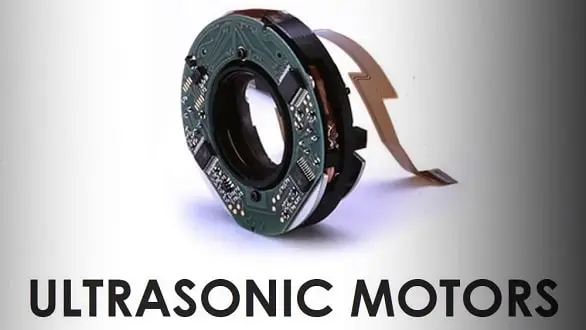Unlike traditional motors that use magnets and electricity to create movement, Ultrasonic motors are known to generate movement using high-frequency sound vibrations. These vibrations create the movement, which is later controlled to use for a specific task. And just because of this particular aspect of ultrasonic motors, they are quite useful in several different ways. But is it always rainbows and sunshine with this type of motor, or is there a whole other story? Well, that is what we are onto today. Here we will be taking a good look at what ultrasonic motors are, and what are the possible advantages and disadvantages of ultrasonic motors.

Advantages Of Ultrasonic Motor
As always, let’s start off with the oh-so-good stuff about ultrasonic motors, and it is going to be a lot of fun.
1. High Precision and Accuracy
So, the first thing you need to know is that these motors are incredibly precise. So if your job is to make medical equipment or computer chips, where even a tiny mistake can mess things up, these motors are a lifesaver. They make sure everything is exactly where it needs to be.
2. Low Noise and Vibration
You know how some machines can be really loud and annoying? Well, these motors are the complete opposite. They’re super quiet, which is perfect if you’re doing something like studying tiny things under a microscope or taking really detailed pictures. In these kinds of jobs, even a little noise or shaking can ruin your work, so a quiet motor is a big deal.
3. Compact Size and Lightweight
Size matters, especially when you’re trying to make things smaller and more portable. These motors are both tiny and light, but they still do their job really well. Imagine fitting a powerful motor into a pocket-sized gadget; ultrasonic motors make that possible!
4. No Electromagnetic Interference
In some jobs, like in hospitals or airplanes, you can’t afford to have any electronic interference messing up your equipment. The cool thing about these motors is that they don’t cause any of those problems. They run smoothly without disrupting other gadgets around them.
5. Easy on Your Electric Bill
If you’re worried about using too much electricity, these motors have got you covered. They only use power when they’re actually doing something, not just sitting there. This is super handy for battery-powered stuff like your smartphone or a little robot.
6. Built to Last
These motors don’t wear out easily because they have fewer parts that move around. That means you won’t have to replace them as often, saving you time and money in the long run. So, they’re kind of like the tortoise in the race, slow and steady wins the day!
7. Versatility
What’s great is that you can use these motors for lots of different things. Need to cut glass or plastic for your project? No problem, these motors can handle it. They’re super flexible and can be adjusted for all sorts of tasks, making them useful in all sorts of industries.
8. Top-Notch Quality
Last but not least, these motors are like the artists of the motor world. They make sure the surface of whatever they’re working on comes out looking really smooth and high-quality. This means fewer mistakes and less waste, which is good for both your wallet and the planet!
Disadvantages Of Ultrasonic Motor
Finally, it is time to see the less shiny side of ultrasonic motors and learn about the challenges you might face with such motors. Ready for that? Here we go:
1. Limited Torque Output
First off, if you’re in the business of big, powerful machines like construction equipment or industrial machines, then ultrasonic motors might not be your best bet. They’re not famous for their power, or as engineers like to say, “torque.” So, if you need something that can lift heavy loads or turn big wheels, you might want to look at other options.
2. Heat Generation at High Frequencies
Second, these motors run at really high speeds, which sounds awesome, right? But this also means they can get hot, and real quick. Too much heat isn’t good for any machine. You might need to add some cooling stuff like fans or heat sinks, and that’s both a hassle and an extra cost.
3. Complex Control Electronics
Another thing is that these motors need special treatment. Controlling them isn’t straightforward and requires some pretty complicated electronics. This could mean that you’ll have to spend more money upfront and you’ll need someone who really knows their stuff to keep everything running smoothly.
4. Sensitivity to Load Variations
You know how some people don’t handle change well? These motors are a bit like that. If the load they’re carrying changes often, they might get fussy. You might have to tinker around with the settings more often than you’d like, and that can be a real time-waster.
5. High Cost
Even though they’re small and neat, these motors can put a dent in your wallet. They need special materials and electronics that don’t come cheap. If you’re watching your budget, this might make you think twice.
6. Tool Wear
Over time, the cutting tools or the parts that actually do the work in these motors can wear down. It’s like how a pencil gets shorter the more you use it. So, you’ll need to replace these parts every so often, which adds to the cost over time.
7. Risk of Damage Due to Vibrations
Last but not least, these motors vibrate a lot, and if you’re using them in situations where there’s no room for error, like medical devices or sensitive scientific equipment, the vibrations could cause some damage or mess up your readings.
Conclusion
That’ll do it. Now you know in what ways the ultrasonic motors can be helpful for your projects, and what are the things you should watch out for. Correct? In our opinion, if you can figure out a way to mitigate the possible disadvantages of ultrasonic motors, then it would be a perfect solution where you don’t require way too powerful motors.

